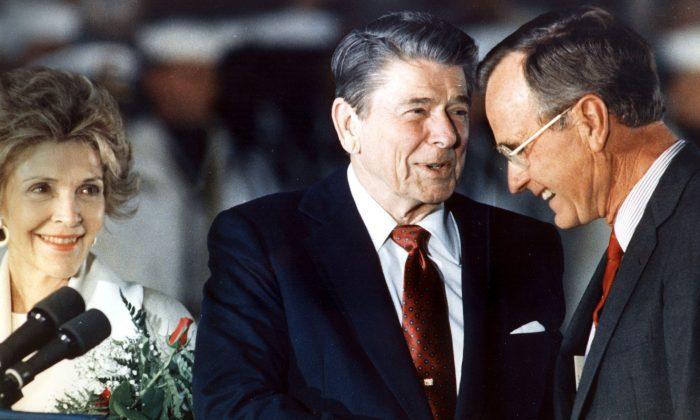Here’s one way to jump-start the struggling U.S. economy and create more jobs: Cut the trade deficit.
On Tuesday, the Commerce Department is expected to report the March deficit on international trade in goods and services was $42 billion, up from $37.8 billion in February.
Trade with Japan, Germany, South Korea, and China account for most of the trade imbalance, and their monetary and exchange-rate policies pose a significant barrier to U.S. growth.
Since last summer, the dollar has strengthened about 15 percent, making U.S. exports more expensive abroad and imports cheaper on U.S. store shelves. In the first quarter alone, the trade deficit subtracted 1.25 percentage points from gross-domestic-product growth, or about $220 billion.
Japan and Germany, through the European Central Bank, have pursued aggressive monetary policies with the intent of cheapening their currencies to boost exports and increase domestic employment.
South Korea prints won and purchases dollars in foreign-exchange markets to keep its currency inexpensive against the dollar, and boost sales of Samsung phones and Kia Motors automobiles in U.S. markets.
China limits inward foreign investment; for example, foreign manufacturers in autos and other industries must limit investments to about 50 percent ownership in joint ventures with domestic partners. That substantially curtails capital inflows and reduces the market value of the yuan. And that is something international organizations such as the International Monetary Fund fail to consider in assessments of China’s exchange-rate policies.
The yuan is not freely convertible on the capital account because foreign financial firms, mutual funds, and individuals are limited in their ability to purchase Chinese assets. And those place similar downward pressure on the demand for and market value of the yuan.
Exchange rates translate domestic prices in local currencies into dollars. Purposeful currency undervaluation is perhaps best revealed by differences in what consumers may purchase with local currencies in their domestic economies and what those currencies converted into dollars at prevailing exchange rates could purchase in the U.S.
The authority on comparisons is the World Bank. Its purchasing power data for 2013—latest available year—indicate average consumer income when spent in China was $11,850, but converted into dollars would fetch only $6,560 in comparable goods and services in the U.S. The difference reflects the undervaluation of the yuan.
The IMF is under considerable pressure from Beijing to declare the yuan a reserve currency. Those include the dollar, yen, euro, and a few other currencies that are held by central banks to back up their local currencies.
Recognizing the yuan as fairly valued, the IMF would ease this designation. However, it would ignore the objective fact that yuan is worth more to Chinese consumers in their home market than it is worth abroad when converted to dollars through China’s controlled foreign-exchange regime.
Cutting the U.S. trade deficit in half—by confronting Japan and Germany about predatory monetary policies; South Korea on direct currency market intervention; and China about investment restrictions and capital controls, or by taking aggressive countermeasures such as the Treasury purchasing large amounts of those countries’ sovereign debt—would boost U.S. GDP by at about $420 billion a year and create more than 3.5 million jobs.
Since 2000, in parallel to a dramatic increase in the trade deficit, U.S. growth has averaged only 1.8 percent, whereas during the prior two decades, the pace was 3.4 percent.
Large trade deficits shift resources from manufacturing and service activities that compete in global markets to domestically focused industries. The former undertake much more research and development and investments in human capital, and those are the sinew of U.S. growth.
By instigating more R&D, eliminating the trade deficit altogether would raise U.S. economic growth by one to two percentage points. But for the trade deficits during the George W. Bush and Barack Obama years, U.S. GDP would be 10 to 20 percent larger than it is today and unemployment not much of a problem.
Peter Morici, professor at the Robert H. Smith School of Business at the University of Maryland, is a recognized expert on economic policy and international economics. Previously he served as director of the Office of Economics at the U.S. International Trade Commission. Follow @pmorici1





Friends Read Free